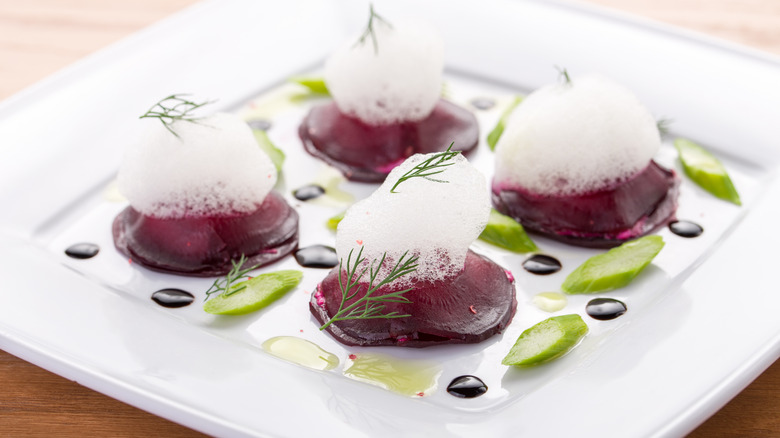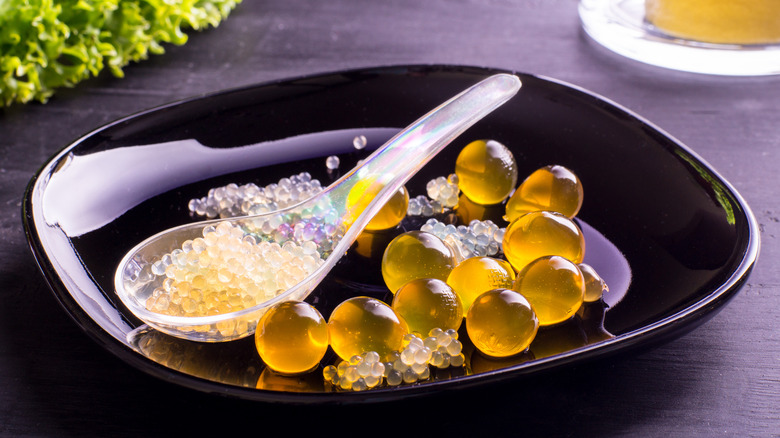The First Dish To Feature El Bulli's Game-Changing Foam
Anyone who keeps tabs on the culinary world or just has an affinity for fine dining is familiar with El Bulli. To call it a restaurant is an understatement, as the establishment, which served its final meal in 2011, was a beacon for developing new and ambitious culinary concepts. Some of the talent that worked at El Bulli over its lifetime include such giants as Grant Achatz of Chicago's Alinea, restaurateur José Andrés, Copenhagen's Noma chef René Redzepi, and Italian restaurant darling Massimo Bottura.
According to El Bulli, the restaurant originated in Roses, Spain, in 1963 as a humble beach bar under the ownership of a German physician and his wife. In 1964, it became a legit restaurant serving simple dishes to beach enthusiasts and vacationers. Throughout the '70s, El Bulli began taking on the role of a legitimate dining destination and won its first Michelin star in 1976, per Google Arts and Culture.
While undoubtedly successful, it was the emergence of chef Ferran Adrià, his brother Albert, and business partner Juli Soler, who led the team that put El Bulli into the global spotlight. In the mid-'90s, foodies, chefs, and restaurateurs began to rally for one of the most prestigious dinner reservations ever. According to Adrià, the concept at El Bulli was not to create new dishes but to create an experience for the diner. As a result, molecular gastronomy was heavily utilized, as evidenced in a dish that debuted in 1994, which featured... foam.
Food combined with science
Many of the dishes created at El Bulli reached legendary status, but it was espuma de judías blancas con erizos, or white bean foam with sea urchins, that is considered the first dish to turn food into foam, 50 Best says. The New York Times describes the dish as a dollop of white foam that sat atop a spiny, dark sea urchin shell, the shell itself resting precariously on two blocks. The contrast between the spikes seemingly floating on air and topped with air was mesmerizing. The restaurant went on to create many more foams, as did the rest of the world's restaurant industry. By the time the second millennium hit, foams were overused and boring.
Adrià also froze savory foods, caramelized quail eggs, turned fruit into caviar, and liquified olives, all of which led to El Bulli being voted the Best Restaurant in the World an astonishing five times. Adrià himself was named Chef of the Decade in 2010, per 50 Best. During its existence, El Bulli created 1,846 new recipes and changed the restaurant world forever (via Google Arts & Culture).
But, its innovation came at a cost. Some of the equipment the restaurant used to create its dishes were terribly expensive, and the establishment was closed for five months out of the year. According to Catalan News, it never turned a profit. The restaurant is now home to the El Bulli Foundation, which supports culinary education, further influencing the world's culinary arts.

